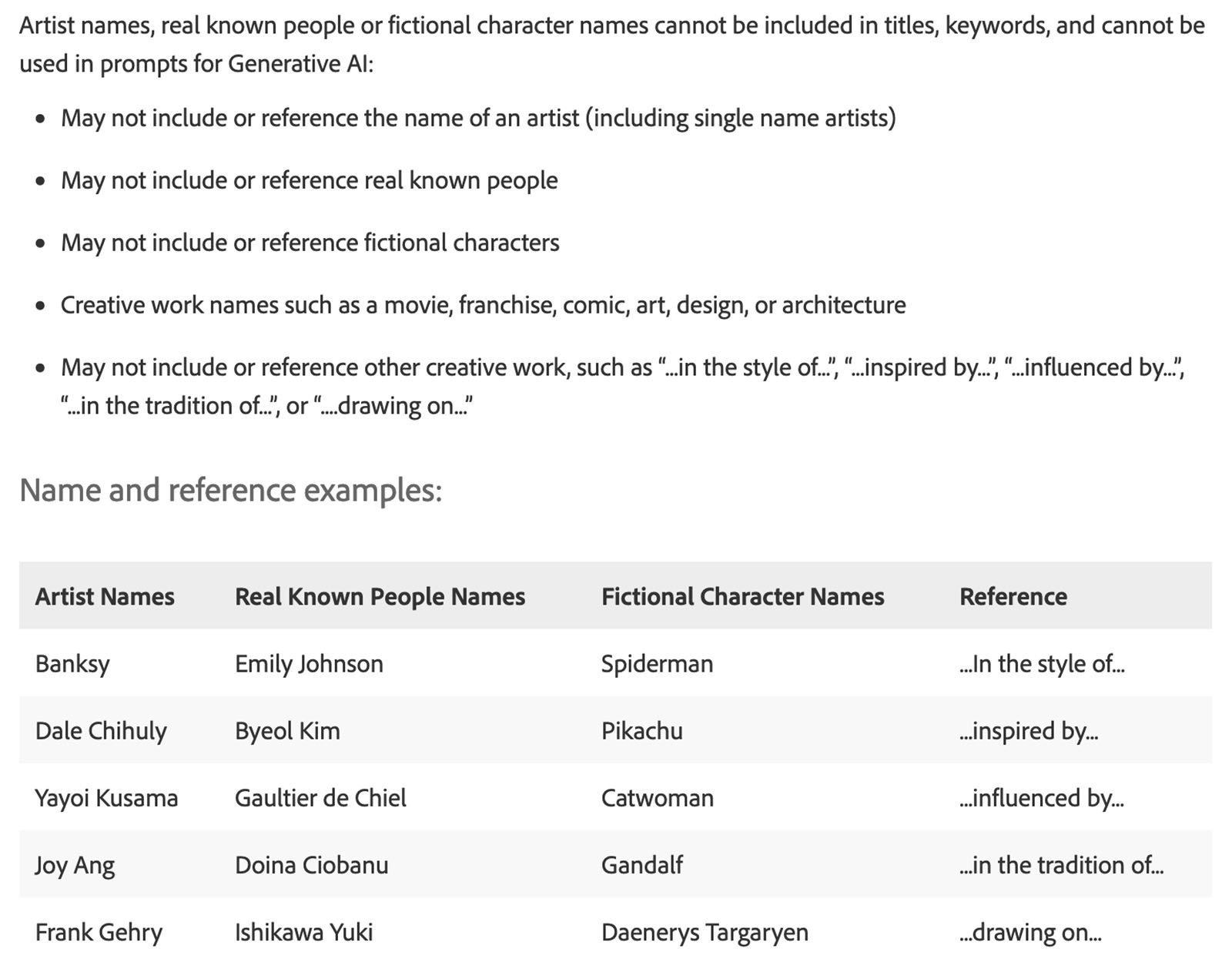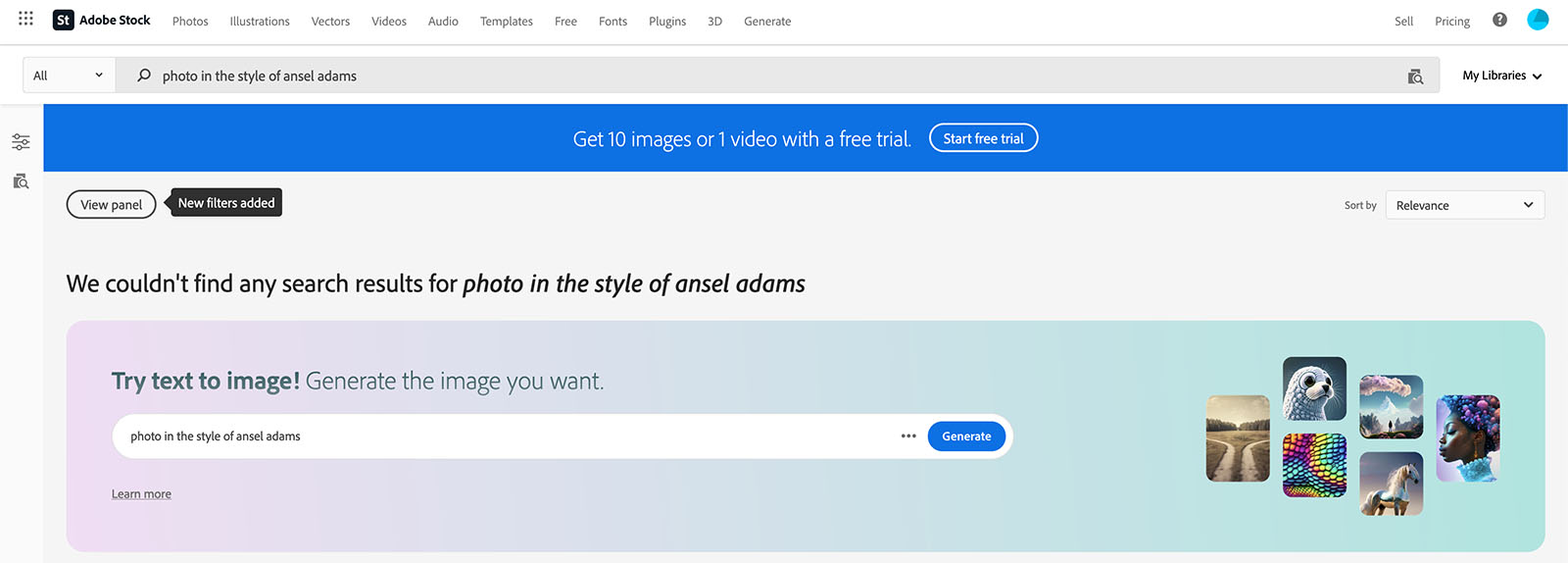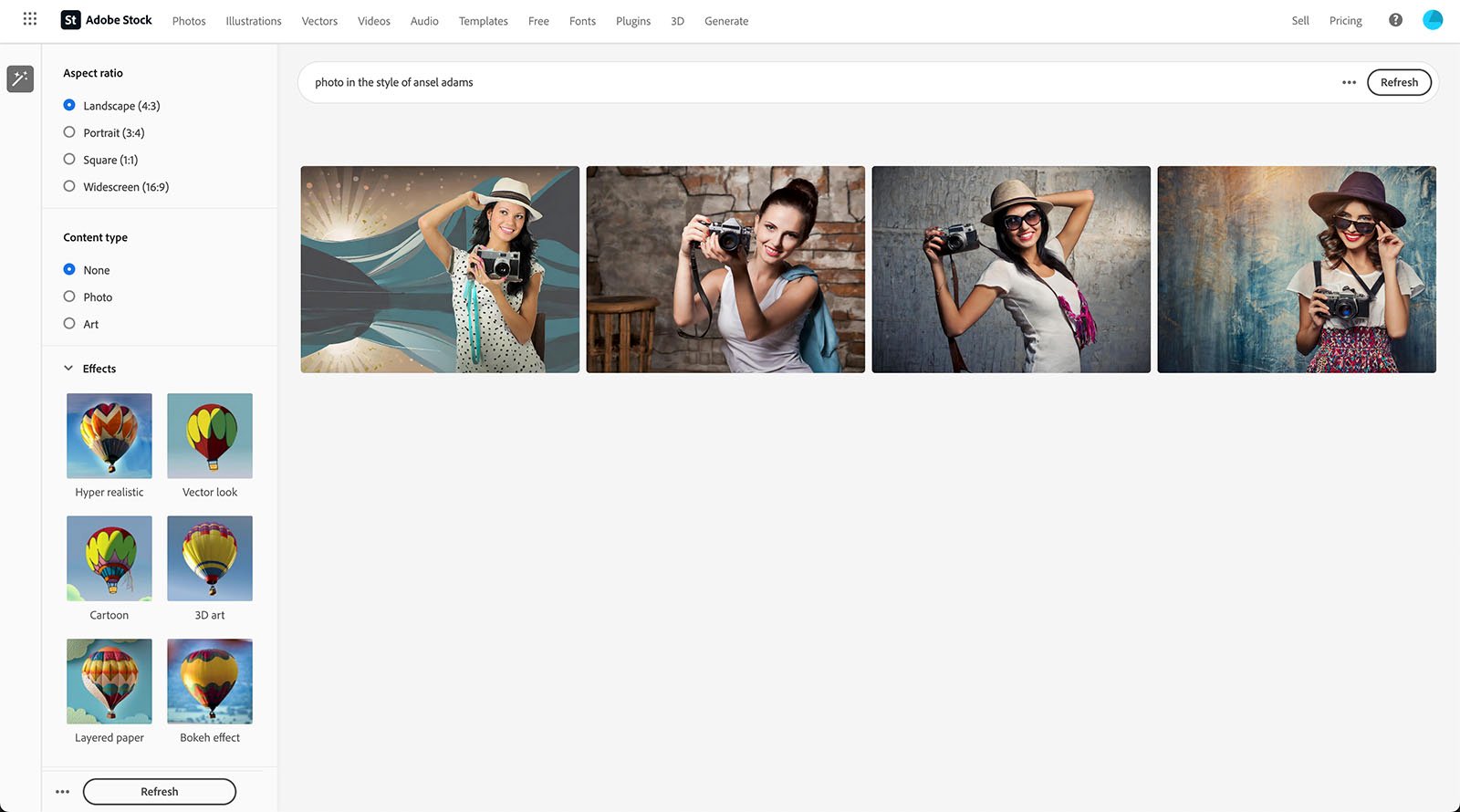![]()
Since Adobe released its text-to-image generative AI tool, Firefly, last year, the company had to grapple with diverse new challenges. Adobe Stock, perhaps as much as any of Adobe’s platforms, had to adapt quickly.
There’s little doubt that generative AI is an important topic for many artists, photographers included. As Adobe has grappled with the delicate balancing act of supporting artists while also developing more AI technology, Adobe Stock has experienced two significant changes in the age of generative AI. One, the number of submissions — and thus payouts to creators — has increased considerably. The other consequence is less positive: The number of submission policy violations has gone up, too, and Adobe is working to react.
The company made numerous changes already, including changing its policy on AI-generated images depicting actual events and honoring the rights of artists, but admits more must be done.

Last week, a notice was sent out to contributors, as spotted by Photo Archive News. The publication notes that Adobe Stock contributors have been told that they cannot submit AI-generated images made using specific prompts, like real artist names, images showing known people or fictional characters, content referencing anything that is copyrighted, or content “inspired by” or “created in the style of” actual artists.
This is a hot topic for artists, as PetaPixel reported last month concerning complaints by the Ansel Adams Trust. The Trust was rightly upset that people were generating and submitting content created in the style of the famed late photographer, and had pointed criticisms about how Adobe handled its complaints.

To that end, an Adobe representative tells PetaPixel that it is actively developing new and improved tools to help protect artists on Adobe Stock.
While the notice sent to Stock users last week and the recently updated HelpX article are part of these broader efforts, the company is also adding a “Report Issue” button to every Adobe Stock asset page next month, which PetaPixel cannot show but did see first-hand. Adobe adds that improving its communications with Adobe Stock users is part of the company’s overall shift toward significantly better transparency.

The report button will make it significantly easier and faster for users to flag any Adobe Stock content that violates submission or content policies, and the reports will go directly to a real person for quick action. Users will be alerted once action is taken — or why action wasn’t taken when content doesn’t violate terms — and offending Adobe Stock contributors will be dealt with, which could include permanent removal from the platform altogether.
Adobe believes the new report system will ensure that any content that falls through the cracks can be swiftly dealt with, an inevitable problem the company admits it hasn’t handled well enough thus far. Adobe also hopes to make these cracks much thinner with an enhanced automated content moderation tool, which will be continuously expanded with additional artist names to flag. The company tells PetaPixel it has added many new artist names to its flag list, and will continually do so as needed.
Adobe Stock is a big money-maker for Adobe, and the company says that its responsibilities concerning the development and deployment of artificial intelligence, including concerning artists, are paramount.
The issue with the AI-generated Ansel Adams content is three-fold. The Ansel Adams tag wasn’t automatically flagged, there was no easy means of reporting the content, and Adobe’s communication was lacking. Adobe tells PetaPixel that it has addressed all three problems with its ongoing developments.
Image credits: Adobe. Featured image created using an asset licensed via Depositphotos.
